Thanks for welcome and the feedback folks.
My RTV has a curved metal shield bolted to the front of the A-arm. You can see it in the picture. My boot didn't get ripped by a stick, it failed, after 10 years and 1,977 hours, in what looks like a perfectly circumferential fatigue failure at the point of maximum flex stress when the wheels are turned. If the wheel is straight you can't tell it's damaged. It just pulls apart when the wheel is turned.
I put my fingers into the grease that's exposed in the picture. It has no grit in it. No evidence of dirt, so hopefully I've dodged a bullet.
The plan is to replace both boots on both front CV joints (drive shafts?).
There is no way I'd use that split boot. This repair is easy enough that I can't see any reason not to do the very best job possible. That split boot just doesn't look as good to me as the one piece that's lasted 10 years - this time anyway.
I cleared out the wood shop to make room, backed in and put it up with 4x4 under the rear wheels and jack stands under the frame.
I'll take it apart tomorrow and get things ready for when the boot kits arrive.
I'll drain and replace the oil in the knuckles and front differential while I'm at it.
Fitch
When I disassembled the front end I learned I have plastic guards (mud holders?), not metal ones like I posted earlier.
I removed the front skid plate. It was packed solid with mud between it and the front axle (differential?) housing. (Picture) I'm not too surprised, I live in So. Central PA which is the mud belt.
The front axle had 740ml of oil in it. I've never added any. Every time I checked it since the thing was new the second (top) notch was full. The knuckle housings had 120ml each. I figured as long as I had access to everything I'd replace it.
I'm not going to replace the (expensive) knuckle seal. There is no evidence of leakage (see pictures). The fact that both knuckles had 120ml of lube in them is further proof there is no leakage. The seal rotates with what Kubota calls the front axle (hub?) so I'm not disturbing the seal at all with this boot replacement.
It looks like I'll be able to take out the bolts to remove the flange from the front axle housing with out removing the A-arms. Even after pressure washing it yesterday to clean it up, which helped a lot, I still need to get a stiff long handled brush to get up in there and brush the dried mud off everything and wipe it down before I want to break that seal.
I discovered a lot of rusty metal on the rear of the front fender wells. There are some other places that are showing their age. While I'm waiting for parts I'll take a power wire brush to that, paint it with some sort of rusty metal primer, then give it a coat of gray paint. When I replaced the rotted deck sheet metal on the dump bed (cut it off, welded on a new one) I discovered a Rustoleum gray that is an acceptable match for the Kubota gray.
Fitch
Attachments
-
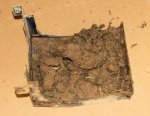 IMG_2215 Dirt trapped by front skid plate - C - RS1200.jpg63.1 KB · Views: 221
IMG_2215 Dirt trapped by front skid plate - C - RS1200.jpg63.1 KB · Views: 221 -
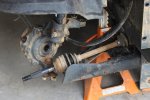 IMG_2219 Right Front Partially Disassembled - C - RS1200.jpg60.5 KB · Views: 219
IMG_2219 Right Front Partially Disassembled - C - RS1200.jpg60.5 KB · Views: 219 -
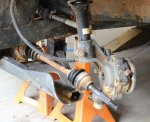 IMG_2221 Left Front Partially Disassembled - C - RS1200.jpg72.4 KB · Views: 220
IMG_2221 Left Front Partially Disassembled - C - RS1200.jpg72.4 KB · Views: 220 -
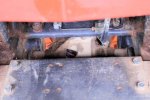 IMG_2225 Front Axle Housing Front View - RS1200.jpg61 KB · Views: 219
IMG_2225 Front Axle Housing Front View - RS1200.jpg61 KB · Views: 219


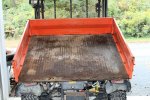
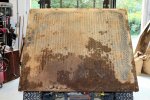
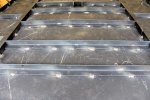
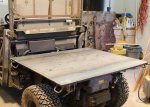
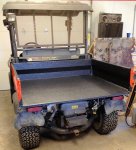
 ) was starting to protest.
) was starting to protest. You may not need to worry about doing the rear unless you see something wrong because you will probably need to replace the rear ujoints one day, and the boots may hold till then. Gotta take off that bumper and access the boots there by cutting the bands and slipping the inner from the outer joints where they go together inside the boots.( to me, it resembles a sliding shaft on a pto implement).
You may not need to worry about doing the rear unless you see something wrong because you will probably need to replace the rear ujoints one day, and the boots may hold till then. Gotta take off that bumper and access the boots there by cutting the bands and slipping the inner from the outer joints where they go together inside the boots.( to me, it resembles a sliding shaft on a pto implement).